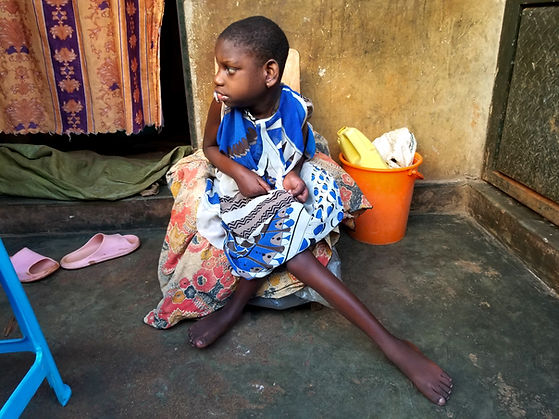Maladies mentales courantes chez les orphelins
What is Cerebral Palsy?
Cerebral Palsy is a group of permanent disorders that affect movement, muscle tone and posture. Its the most common disability in childhood and its effects can vary from person to person.

Maladies mentales courantes chez les orphelins

SPASTIC
CEREBRAL PALSY
Spastic Cerebral Disorder is characterized by increased muscle tone and stiffness
DYSKINETIC
CEREBRAL PALSY
Dyskinetic Cerebral Palsy is characterized by involuntary movements and muscle spasms.


ATAXIC CEREBRAL
PALSY
Ataxic Cerebral Palsy is characterized by coordination and balance difficulties.
MIXED CEREBRAL
PALSY
Mixed Cerebral Palsy is a combination of different types of CP.


TREATMENTS & MANAGEMENT
Despite of Cerebral Palsy being a permanent muscle condition, here are some of the treatments that enabled victims to improve:
1. Physical Therapy: Helps improve mobility strength and flexibility.
2. Occupational Therapy: Focuses on developing daily living skills and adapting to challenges.
3. Speech Therapy: Helps improve communication skills.
4. Medications: May be used to manage associated conditions such as seizures or muscle spasms.
5. Surgery: May be necessary to improve mobility or reduce muscle spasms.
Nakamya Rashadi's Story
Rashad is an orphaned teenage girl born in 2013 July 10th who lives with her Widowed Vulnerable Mother "Nansubuga Zainah".
Rashad was born as a tired baby and was put on a life support system after failing to cry at birth, fortunately her life was saved.
At 8months of Age, Rashad was diagnosed with Cerebral Palsy meaning her body is paralyzed.
Fortunately Rashad has had a chance to sit thanks to the Corner seat but she can improve better if she gets Physical therapy, a wheel chair & Standing Frame.

Maladies mentales courantes chez les orphelins
Mugisha's Story
Mugisha is a 12year old boy who suffered from a severe fever as a baby that caused him Cerebral Palsy. He is stigmatized with in the community he lives in since other parents don't allow their children to play near him thinking they will contract the disease.
Fortunately Mugisha has had therapy & currently he can stand though not for too long. He needs a standing frame, AFOs, KAFOs & a Gait Trainer to improve.



